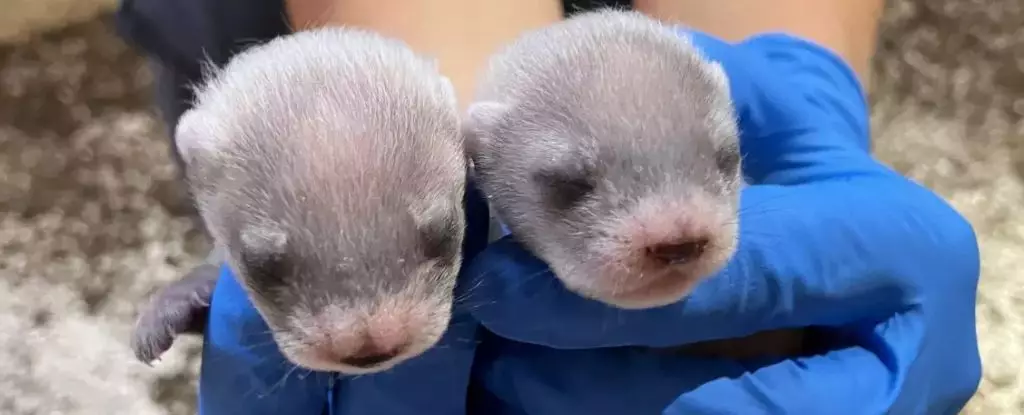The black-footed ferret, once thought to be extinct by 1979, has emerged from the brink of nonexistence, showcasing both the marvel of scientific innovation and the complexities of conservation efforts. Through advanced cloning techniques, scientists in the United States have successfully recreated the species using genetic material from the last known wild ferrets. In a remarkable milestone, one of these clones, named Antonia, recently gave birth to two healthy pups. This event not only symbolizes hope for the species but also raises critical questions about the future of conservation practices in a rapidly changing ecosystem.
The journey of the black-footed ferret has been fraught with challenges. Initially, conservationists embarked on a captive breeding program in 1981, beginning with just 18 individuals, all of which were captured from a dwindling and genetically homogenous population in Wyoming. Today, there are approximately 350 of these ferrets in the wild, but they continue to face significant obstacles, including low genetic diversity, various diseases, and habitat degradation due to agricultural expansion. The recent cloning efforts have provided a glimmer of hope for enhancing their genetic pool, as Antonia was created from a genetic sample containing three times the genetic diversity of currently living black-footed ferrets.
The implications of introducing diverse genetic material are profound; researchers argue that it could be key to generating a healthier and more resilient population capable of withstanding environmental pressures. As emphasized by the U.S. Fish and Wildlife Service, the regeneration of genetic diversity is essential for the long-term survival of the species.
This cloning success story is a testament to the collaborative nature of contemporary conservation biology. Crucial partnerships formed among key institutions such as the U.S. Fish and Wildlife Service, the Smithsonian National Zoo, and various nonprofit organizations illustrate the multifaceted approach toward species recovery. The amalgamation of expertise from conservationists, geneticists, and wildlife organizations signifies a turning point; however, it is important to recognize that such an endeavor is both complex and costly.
Despite the excitement surrounding cloning technology, there is a growing debate regarding the allocation of resources. Some scientists caution that while cloning can restore numbers, it may not adequately address the underlying issues that lead to species decline. Investments in conservation cloning, while groundbreaking, might arguably divert funds and focus away from more holistic approaches like habitat preservation and restoration.
Critics like wildlife ecologist David Jachowski have highlighted fundamental flaws in relying heavily on cloning as a singular solution for conservation challenges. The core of the issue stems from habitat loss, a major contributor to the decline of the black-footed ferret and many other endangered species. Cloning alone does not rectify the habitat destruction and human-wildlife conflicts that are pervasive threats to biodiversity. Jachowski’s research emphasizes that robust conservation efforts must focus on restoring ecosystems and securing adequate habitats before engaging in high-tech solutions.
The stark reality facing conservationists is that, despite advancements in genetic techniques, nature cannot be manipulated in isolation. Without addressing the root causes of decline—such as urban sprawl and agricultural encroachment—cloning initiatives risk becoming ineffective “band-aid” solutions.
As the offspring of Antonia represent the future of their species, questions arise regarding their survival in the wild. Will these cloned ferrets adapt to the complexities of their habitats in a world where threats loom large? The success of Antonia’s pups will be a critical litmus test for the broader implications of cloning in conservation.
While the birth of Antonia’s pups inspires hope for the black-footed ferret, it necessitates a reevaluation of conservation strategies. Cloning has opened new avenues, providing pivotal genetic variation that may aid recovery, but this must be complemented by comprehensive ecosystem management. To truly protect endangered species, a dual approach—blending cutting-edge technology with sustainable habitat restoration—should be the ultimate goal of conservationists moving forward.


Leave a Reply